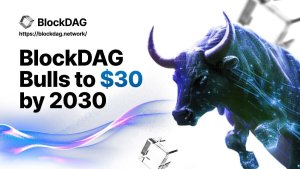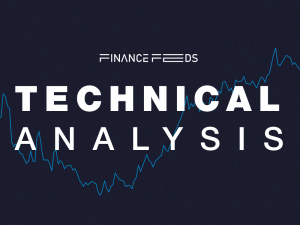A Global Business: How Japan’s leverage restrictions did not matter a jot. ESMA rulings? What’s the fuss? – Op Ed
Worried about the leverage restrictions? Let’s take a step back, and examine how Japan, an equally conservative, domestic-focused market made up of dedicated and analytical traders responded when the national regulator restricted leverage. It created a more sustainable and certain environment which was embraced and welcomed, volumes went up and foreign firms still could not gain traction. Thus, we consider that ESMA’s rulings will empower the British and Northern European firms. Here is our detailed view

Whilst traders of retail FX are present in relatively even distribution in all continents of the earth, the actual industry itself has centered itself in just a few regions, those being: Cyprus, United Kingdom, Australia, North America, Hong Kong, Singapore and Japan.
Each region has become a specific home to specific sectors of the industry and is very much compartmentalized, even if the services offered to end users are similar.
In light of current nervousness surrounding the future of the Western retail FX markets in the immediate period following ESMA’s leverage restrictions that were recently set in force, here in London over the past two weeks, I have seen some very discontent expressions on faces, and a feeling of uncertainty has permeated across small to medium sized market participants, many technology providers whose solutions are provided to them on a volume capitalization basis, and even among major mainstream research and news entities on the basis of concern over potential market contraction and shrinking revenues due to less leverage, and advertising bans by Google and Facebook relating to certain product ranges.
It is time to take stock and take a step back, and look at how this type of activity has been present by regulatory authorities in various other regions of the world in which retail FX is a massive proportion of the financial markets activity, and particularly, where it has taken place in regions where proprietary platforms are preferred, traders are using their own self-directed techniques, are not using EAs, and are loyal to vast, long established retail FX giants.
Despite its complete cultural opposites, Japan actually checks all of those boxes and therefore can be used as a yardstick.
Japan’s FX industry is completely centered on the domestic market, yet it accounts for between 35% and 40% of all retail FX volume in the entire world.
In Japan, all OTC (over the counter FX which is traded without an exchange) is conducted by Japanese companies, and the client base of the companies is completely domestic.
Many firms, large and small, have attempted to enter the Japanese market, either by basing themselves in one of the regions listed above and attempting to partner with introducers or local firms, or by attempting to establish direct business in Japan, and not one of them has been successful in any form of long term business.
The dominant firms in Japan are: DMM Securities, GMO Click Securities, MONEX Group and Invast. These companies, between themselves, are responsible for one third of all global retail FX order flow in the OTC FX markets.
Despite lack of international competition in Japan, business is booming for domestic retail FX firms, and no evidence of Japanese traders looking to trade with overseas firm has come about. Rather topically at the moment, it is worth looking back to early 2013 when the Japanese FSA implemented leverage restrictions on all Japanese market participants, spurring speculation that the Japanese traders doing such massive volume would seek overseas firms and that the rulings would damage the vast domination of domestic firms – but no such shift occurred and it was business as usual. This can be used as a yardstick to gauge current ESMA rulings.
Between January and March 2016, 15,413,316 trillion yen was traded on an OTC basis among Japan’s companies, a 50.2% increase over the previous quarter and a record until that point.
So strong is Japan’s domestic market that its own companies have pulled out of other markets. MONEX Group sold its US and Australian client bases of its subsidiary IBFX two years ago, and discontinued the use of the MetaTrader 4 platform completely on all markets, focusing on its proprietary Tradestation.
Rather unlike traders in surrounding regions such as China, Indonesia, Hong Kong and South Korea, Japanese traders very rarely rely on automated methods of trading such as robots (otherwise known as Expert Advisors that trade accounts automatically).
Instead, traders use manual trading and are not as conditioned to the ubiquitous MetaTrader 4 as many other firms globally. Indeed, most Japanese companies have done away with MetaTrader altogether.
Japan’s exchange-traded FX sector is also quite substantial, with 15,144,600 contracts having been traded on the Tokyo Financial Exchange’s Click365 margin FX facility between January and March 2016 In Japan, it is not a regulatory matter that prevents companies from overseas entering, but more that the entire system is domestic.
Therefore it is appropriate to consider that Japan is not a market to approach externally or internally by non-Japanese companies. Japan’s FX industry is completely centered on the domestic market, yet it accounts for between 35% and 40% of all retail FX volume in the entire world.
Immediately after the Japanese FSA implemented the leverage restrictions and took the view that 1:30 should be the maximum ratio, overseas companies made substantial attempts to bring some of the vast business from Japan’s retail market onboard, with very little ability to gain traction.
Quite the opposite occurred. Japan’s traders actually knuckled down and traded even more volume, placing an emphasis on raising the amount of margin that they trade with, instead of having a minimal margin and relying on leverage.
This dynamic has continued and today’s Japanese market is stable, sustainable, remains dominated by the aforementioned giants and continues to be impenetrable to outsiders.
Speaking to several executives within large well established companies here in London this week, the reception has echoed this line of thinking. Indeed, it has been proffered to FinanceFeeds that the emphasis will remain on the large, good quality firms, often those with proprietary platforms especially where traders in the United Kingdom are concerned (over 70% of IG Group and CMC Markets clients are UK based, for example), and the traders will up their deposit amounts, creating stability in terms of assets under management, and less exposure.
Most good quality long term traders understand this well, just as the Japanese traders did when leverage restrictions came into force, and will remain with the firms that adhere to the rulings and continue to provide good quality multi-asset trading environments and a proper product range.
Japan’s ‘big three’, those being DMM Securities, GMO Click and Monex Group began experiencing record trading volumes of over $1 trillion per month for a sustained period of time immediately after the leverage restrictions took place, demonstrating that more capital was being placed in accounts to trade to those volumes than would have otherwise been needed with larger leverage.
This may well happen to the larger, well established Western firms very soon, and those prepared to do it properly, go the hard yards and set out the future for the entire multi-asset trading industry will be the ones who garner the long term interest of the more analytical and serious client base.
With IG Group’s imminent re-entry to the US market, that should signify a sign of the times, and a sign of the times upon which to accept with resolve and look to a good quality, less unpredictable future.
For brokers with very ‘light’ licensing, management based outside Europe, onboarding clients offshore and b-booking trades with leverage running into the thousands to one? What did you expect, really?
Image: London Bridge, from 9th Floor, City Hall, London SE1, April 4, 2018









